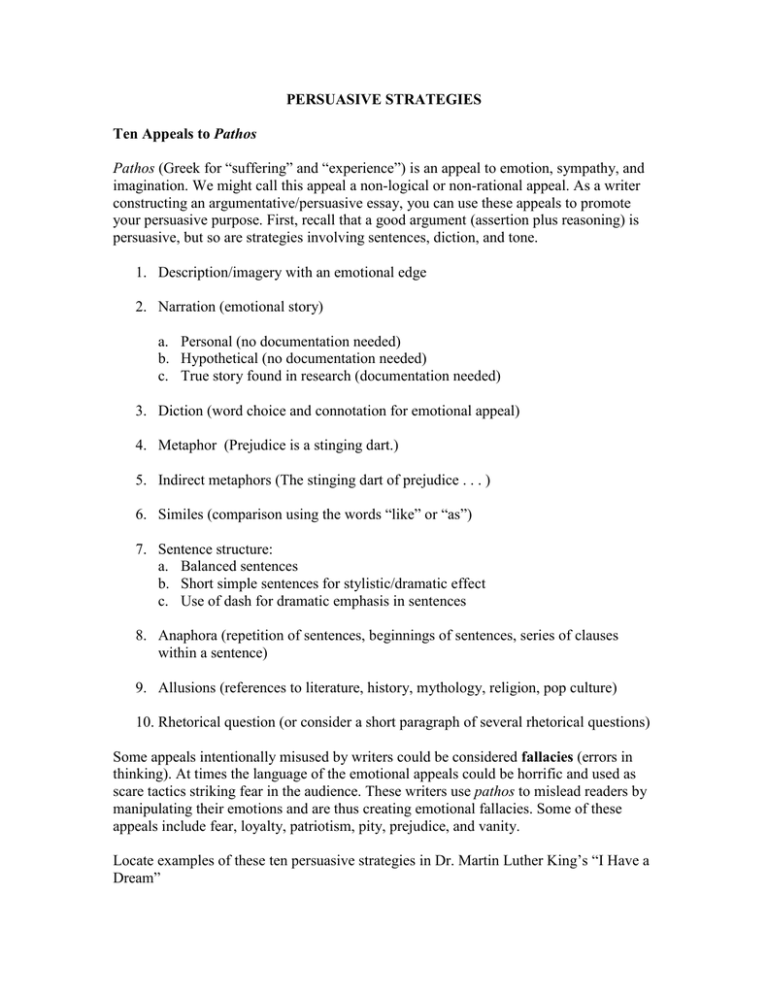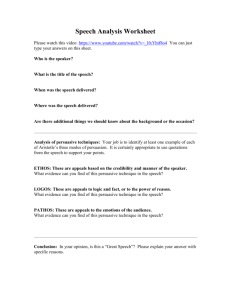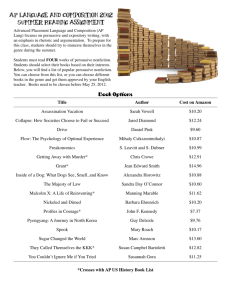PERSUASIVE STRATEGIES.doc
advertisement

PERSUASIVE STRATEGIES Ten Appeals to Pathos Pathos (Greek for “suffering” and “experience”) is an appeal to emotion, sympathy, and imagination. We might call this appeal a non-logical or non-rational appeal. As a writer constructing an argumentative/persuasive essay, you can use these appeals to promote your persuasive purpose. First, recall that a good argument (assertion plus reasoning) is persuasive, but so are strategies involving sentences, diction, and tone. 1. Description/imagery with an emotional edge 2. Narration (emotional story) a. Personal (no documentation needed) b. Hypothetical (no documentation needed) c. True story found in research (documentation needed) 3. Diction (word choice and connotation for emotional appeal) 4. Metaphor (Prejudice is a stinging dart.) 5. Indirect metaphors (The stinging dart of prejudice . . . ) 6. Similes (comparison using the words “like” or “as”) 7. Sentence structure: a. Balanced sentences b. Short simple sentences for stylistic/dramatic effect c. Use of dash for dramatic emphasis in sentences 8. Anaphora (repetition of sentences, beginnings of sentences, series of clauses within a sentence) 9. Allusions (references to literature, history, mythology, religion, pop culture) 10. Rhetorical question (or consider a short paragraph of several rhetorical questions) Some appeals intentionally misused by writers could be considered fallacies (errors in thinking). At times the language of the emotional appeals could be horrific and used as scare tactics striking fear in the audience. These writers use pathos to mislead readers by manipulating their emotions and are thus creating emotional fallacies. Some of these appeals include fear, loyalty, patriotism, pity, prejudice, and vanity. Locate examples of these ten persuasive strategies in Dr. Martin Luther King’s “I Have a Dream”

